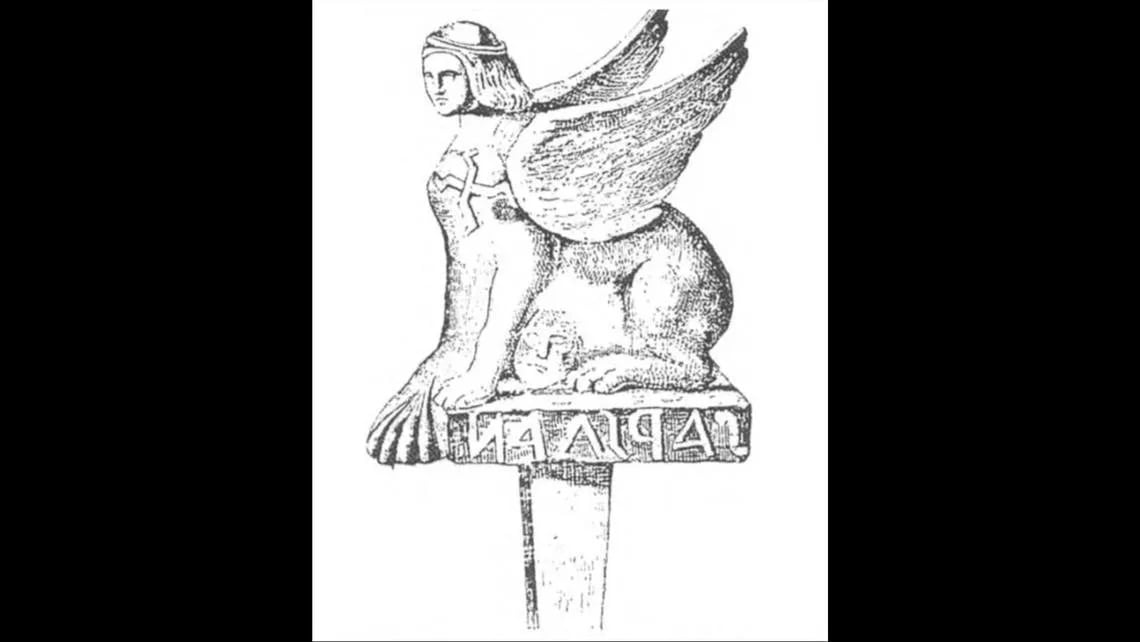
A mysterious inscription on an ancient Sphinx that puzzled scientists for decades has finally been deciphered as Greek writing.
For decades, scholars examined the drawing, attempting to decode the inscription. However, they were unsuccessful, perhaps because in an “unusual” break from ancient norms it reads from right to left.
Dating to the third century, the bronze sphinx statue originated from Dacia, a Roman province that largely corresponds to modern-day Romania.
After being discovered in the 19th century, the statue was stolen from a European count sometime around 1848. While it was never recovered, a detailed drawing of the sphinx remained. In the drawing, the inscription, composed of a handful of characters, can be seen on the base of the statue.
One of the most recognizable figures of antiquity, the Sphinx took many forms as portrayed throughout the civilizations of Greece, the Near East, and Asia. With features including either a male or female human head, the body of a lion and the wings of a giant bird, the Sphinx is a symbol of power.
Taking the form of a winged lion, “the sphinx was perceived by the original creators and users of the artifact as a representation of a mythical deity that they honored and worshiped,” Peter Revesz, the study author and professor at the University of Nebraska, said.
The study was published in the journal Mediterranean Archaeology and Archaeometry.
What the Greek inscription on the Sphinx says
“The characters may seem mysterious at first,” Revesz said, but “once the mirroring is noticed, the characters become easily recognizable as Greek alphabet letters, a few of them being in a more archaic form.”
After examining ancient alphabets, Revesz determined the message to be a proto-Hungarian poem written with Greek letters.
Translated into English, it reads: “Lo, behold, worship: here is the holy lion,” which can be perceived as a command to venerate the sphinx.
The decoded poem is noteworthy because “the sphinx cult was not part of the mainstream ancient Roman mythology which features the Roman gods and goddesses that many people today are familiar with,” Revesz said.
“It is unique that this sphinx statue provides some record of a minority religion within the Roman empire, for which records are much scarcer,” Revesz added.
Depictions of the deity first cropped up in Egypt and parts of the Middle East in the third century B.C. and were later found throughout the broader Mediterranean world, according to the Oxford Classical Dictionary.
The text is also abnormal, as it is written as a metric poem, whereas most inscriptions at the time were written in prose.
“By using these poetic features, the scribe chose a specific text that was also carefully and artfully constructed,” Revesz said.
Related: Greek Goddess Sphinx Embodied Concept of Knowledge as Power
See all the latest news from Greece and the world at Greekreporter.com. Contact our newsroom to report an update or send your story, photos and videos. Follow GR on Google News and subscribe here to our daily email!



